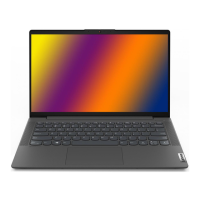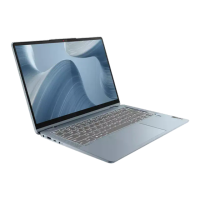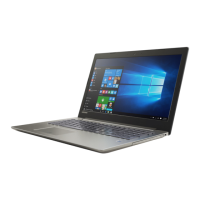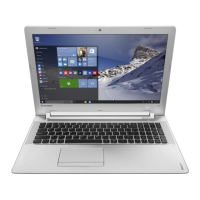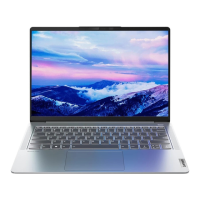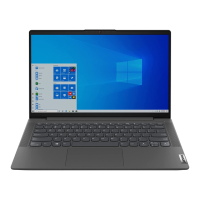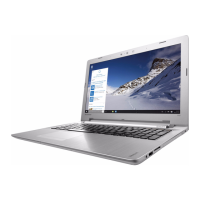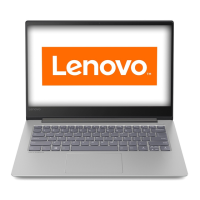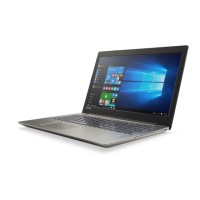Do you have a question about the Lenovo ideapad 510 and is the answer not in the manual?
Details the components visible on the top surface of the computer, including cameras, microphones, and buttons.
Describes how to use function keys and their combinations to change operational features instantly.
Details how to access system settings quickly using hotkeys and how to set hotkey mode.
Identifies and explains the ports and indicators on the left side of the computer, including the AC adapter jack and battery status.
Identifies and explains components on the right side, such as power status indicator, USB ports, optical drive, and security slot.
Details the components on the bottom of the computer, including louvers for cooling and speakers for audio output.
Guides through the initial setup process, including license agreement, internet connection, and user account creation.
Details how to create a system image file for backing up the system partition for future restoration.
Provides instructions for restoring the system partition to its original status or a previous backup point.
Details the components visible on the top surface of the computer, including cameras, microphones, and buttons.
Describes how to use function keys and their combinations to change operational features instantly.
Details how to access system settings quickly using hotkeys and how to set hotkey mode.
Identifies and explains the ports and indicators on the left side of the computer, including the AC adapter jack and battery status.
Identifies and explains components on the right side, such as power status indicator, USB ports, optical drive, and security slot.
Details the components on the bottom of the computer, including louvers for cooling and speakers for audio output.
Guides through the initial setup process, including license agreement, internet connection, and user account creation.
Details how to create a system image file for backing up the system partition for future restoration.
Provides instructions for restoring the system partition to its original status or a previous backup point.
| Form factor | Clamshell |
|---|---|
| Product type | Laptop |
| Product color | White |
| Market positioning | High performance |
| Screen shape | Flat |
| LED backlight | Yes |
| Display diagonal | 13.3 \ |
| Display resolution | 1366 x 768 pixels |
| Native aspect ratio | 16:9 |
| Pointing device | Touchpad |
| Bus type | OPI |
| Stepping | H0 |
| Tjunction | 100 °C |
| Processor cache | 3 MB |
| Processor cores | 2 |
| System bus rate | 4 GT/s |
| Processor family | Intel® Core™ i3 |
| Processor socket | BGA 1356 |
| Processor threads | 4 |
| Processor codename | Kaby Lake |
| Processor frequency | 2.4 GHz |
| Processor cache type | Smart Cache |
| Configurable TDP-down | 7.5 W |
| Processor lithography | 14 nm |
| Processor manufacturer | Intel |
| PCI Express slots version | 3.0 |
| Processor operating modes | 64-bit |
| PCI Express configurations | 1x2+2x1, 1x4, 2x2, 4x1 |
| Thermal Design Power (TDP) | 15 W |
| Configurable TDP-down frequency | 0.8 GHz |
| Maximum number of PCI Express lanes | 12 |
| Maximum internal memory (64-bit) | 8 GB |
| Memory slots | 1x SO-DIMM |
| Internal memory | 4 GB |
| Memory clock speed | 2133 MHz |
| Memory form factor | SO-DIMM |
| Internal memory type | DDR4-SDRAM |
| Memory layout (slots x size) | 1 x 4 GB |
| HDD size | 2.5 \ |
| HDD speed | 5400 RPM |
| HDD interface | SATA |
| Storage media | HDD |
| Total storage capacity | 500 GB |
| Compatible memory cards | MMC, SD, SDHC, SDXC |
| Number of HDDs installed | 1 |
| On-board graphics card ID | 0x5916 |
| Discrete graphics card model | Not available |
| On-board graphics card model | Intel® HD Graphics 620 |
| On-board graphics card family | Intel® HD Graphics |
| Maximum on-board graphics card memory | 32 GB |
| On-board graphics card OpenGL version | 4.4 |
| On-board graphics card base frequency | 300 MHz |
| On-board graphics card DirectX version | 12.0 |
| On-board graphics card dynamic frequency (max) | 1000 MHz |
| Speaker power | 1.5 W |
| Speakers manufacturer | Harman Kardon |
| Front camera signal format | 720p |
| Front camera resolution (numeric) | 0.3 MP |
| Battery capacity | 35 Wh |
| AC adapter frequency | 50 - 60 Hz |
| AC adapter input voltage | 100 - 240 V |
| Cable lock slot type | Kensington |
| Wi-Fi standards | 802.11a, Wi-Fi 5 (802.11ac), 802.11b, 802.11g, Wi-Fi 4 (802.11n) |
| Bluetooth version | 4.0 |
| Top Wi-Fi standard | Wi-Fi 5 (802.11ac) |
| Ethernet LAN data rates | 10, 100, 1000 Mbit/s |
| Charging port type | DC-in jack |
| USB 2.0 ports quantity | USB 2.0 ports have a data transmission speed of 480 Mbps, and are backwards compatible with USB 1.1 ports. You can connect all kinds of peripheral devices to them. |
| VGA (D-Sub) ports quantity | 0 |
| Processor code | SR2ZW |
| Processor ARK ID | 95442 |
| Processor package size | 42 x 24 mm |
| Supported instruction sets | AVX 2.0, SSE4.2 |
| Intel Identity Protection Technology version | 1.00 |
| Intel Stable Image Platform Program (SIPP) version | 0.00 |
| Motherboard chipset | Intel SoC |
| Sustainability certificates | RoHS, ENERGY STAR |
| Depth | 225 mm |
|---|---|
| Width | 320 mm |
| Height | 18.7 mm |
| Weight | 1500 g |
